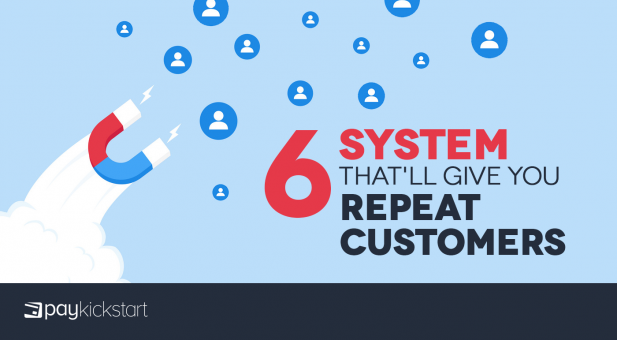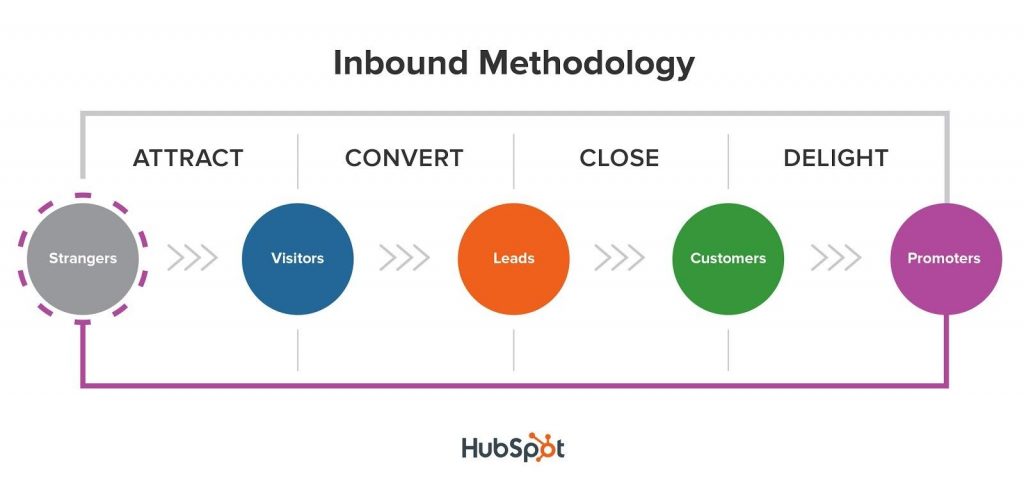Subscription growth hack (by PayKickstart)
Facebook Group - 3,932 members
Visit Group
Customer churn is the biggest barrier to SaaS growth, and customer retention is at the heart of all SaaS growth strategies. Developing a SaaS growth strategy is both a challenge and an opportunity.
The challenge comes from a highly competitive landscape with low entry barriers. The big 5 (Microsoft, Oracle, Adobe, SAP, and Salesforce) control over 40% of the market share. The opportunity and excitement come from a $157 billion market with a five-year CAGR of over 18%.
While traditional marketing focuses on top of the funnel activities, growth marketing covers the entire marketing funnel.

Source:trychamelon.com
A growth plan is data-centric and equally focused on acquisition and retention. A leaky sales funnel (high churn rate of customers) will raise your customer acquisition cost while tempering growth and profitability.
At its heart, a SaaS growth plan should cover the following four areas in detail:
While these four branches form the heart of your SaaS growth strategy, the focus of this article will be on retention strategies. Let’s look at customer retention in greater detail.
Think of your SaaS revenue as water in a bucket. Every new customer you acquire fills the bucket a little more, while every customer churn drills a small hole in the bucket. Will you manage to fill your bucket? More importantly, will you manage to keep it filled?
The simple fact is that it costs five times more to acquire a new customer versus retaining an existing one. The cost of churn is something the big five understand intuitively. It comes as no surprise that a 6% churn at the top five SaaS companies is less than a third of the 20% churn at the average $10 million SaaS company.
The final nail in the coffin is that if your customer’s lifetime value (LTV), or the number of payment cycles you generate, doesn’t even cover your acquisition costs, all your growth and profitability strategies will have been for naught.
So what is the secret sauce for customer retention? How do the best companies manage to keep churn to single digits? For a start, the following three business values form the core of their operational DNA:
Internalizing these three values will allow you to extend the LTV of your users to the point where using your service becomes a habit and part of their day-to-day lives.
But that’s not all. In addition to the customer-centric and external focus, you also need to drive retention sensitivity internally within your organization. Here’s how:
4. Optimize your pricing to deliver retention.
5. Focus on Onboarding.
6. Align team incentives around retention.
Add these six core strategies together, and you have the complete recipe. Let’s look at each area in greater detail.
Customer engagement is a measure of your customer’s emotional connection with your brand, products, and services. Higher engagement levels translate into higher satisfaction levels and a higher LTV. While emotions are tough to quantify and measure, some systems and processes that raise engagement levels include:
By engaging your customers, not only are you increasing their LTV, but you are also creating a strong bond between them, your brand, and your product or service.
Unmet user expectations are one of the leading causes of churn. Most often, this stems from over-promising and under-delivering. Your messaging in terms of what they can expect from your service has to be both clear-cut and comprehensive.
As a best practice, it is always better to under-promise and over-deliver. Delight the user by providing something they weren’t expecting.
Your value proposition is what makes your service unique and sets you apart from the competition. Your value proposition should be a set of concrete deliverables that are easy to understand and digestible in 10 seconds or less.
No hype or jargon – instead, focus on simplicity and clarity. Your value proposition is your promise to the customer, so delivery on this promise is a must.
The biggest advantage of long-term customers is your ability to upsell them to your premium and value-added services. You have already established a level of trust with the user, and hence they are more likely to take a chance on additional products or services. You are increasing your revenue while the user is solving more of their problems, a win-win situation that deepens the engagement bond.

If engagement helps you build a bond with your customer, delighting the customer turns them into a brand advocate and defacto promoter. A delighted customer will talk about your service to others in their network and provide invaluable word-of-mouth advertising. The user will also help you with link building by sharing your content across social media platforms. So how do you delight your customer?
In other words, go above and beyond to impress. These strategies will repay you many times over in customer retention and increased LTV.
Expecting your users to pay for your service before trying it is a surefire recipe for disaster. The 14-day free trial hook is popular, but you should try out different trial lengths. Some evidence suggests that a longer trial can lead to a higher churn rate, but this is by no means universal. Test out different versions to see what gets the best results for your business.
Freemium is another trial model where you give the user complete access to your service for a limited period, thereby allowing the user to experience their “A-ha!” moment. At the end of the trial period, the user can either opt-in to a paid subscription or continue using the basic version with premium level customer support.
There is an interesting case study on how Slack used the freemium service to become one of the fastest-growing SaaS companies. Check it out to understand more about how this strategy can work.
The quality of your customer service can make or break your organization. A user will forgive a problem with the product as long as their issues are addressed and resolved quickly. Poor customer service is the single largest contributor to churn – 82% of users churn because of poor customer service!
Pro tip: one easy way to offer great customer service is to add a chat plugin to your website so that users can get their issues resolved instantly without even needing to pick up the telephone.
Rewarding your loyal and long time users is another way of making them feel special. Simple “thank you” rewards like a one-month free subscription, a discount, or a free upgrade help in retaining customers. You could also offer perks to customers who refer a friend when that referral leads to a paid subscription.
A closed and continuous feedback loop helps users feel that they are an integral and valued part of the organization.

Source: UseResponse
It also provides you with valuable insights you can use to continually upgrade your service, thereby adding to customer delight and keeping you ahead of the competition. Some general guidelines for proactive listening include:
Let us now look at the attributes of retention that are internal to a company’s operation.
An optimal pricing strategy balances value to the user with profits for the company, and pricing is a big lever in lowering your churn rate. Companies that use a cost-plus or competitive pricing approach leave a chunk of potential revenue on the table.

Source: Profitwell.com
To hit the bullseye and maximize your revenue, your pricing has to be value-led. You need answers to the following questions before you set your pricing:
Avoid discounting on your base price unless it’s a limited offer to long-term customers. While bulk discounting will boost your initial numbers, the effects are short-lived. Discounting reduces your SaaS LTV by 30%. Besides, discounted customers have twice the churn rate of full paying customers, because by paying less they have lower engagement and loyalty. Loyalty has to be earned and, assuming an excellent product or service, users will pay a premium price. Value driven pricing focuses on raising prices to match the customers perceived value. Why do you think Apple charges premium prices for its products?
The quality of your onboarding experience is the difference between users sticking to your service or fleeing after a trial period. Onboarding is the process of holding your user’s hand and walking them through the functionality of your service. Contrary to popular belief, it is not a one time process, but a continuous activity for the first four weeks or so of service adoption.
Onboarding activities can range from providing user content such as help videos, to one-on-one interactions for complex software. It covers the first three stages of retention:
Most companies put in effort on the 4+ week retention, while most of the churn occurs in week 1-4. In other words, efforts you put into onboarding will pay off in the long run.
#6. Align Team Incentives Around Retention
A common problem at SaaS companies is that different business verticals measure performance on varying metrics. The sales team counts dollars in the bank, the marketing team looks at how many leads it generates, while the product teams assess the value of the features they provide. What about the customer? Who is measuring customer needs and customer retention?
It’s time to stop measuring what employees do and start measuring customer satisfaction and retention levels across the business verticals. Here are a few ideas for your various teams to get you started:
Sales: Link a part of their commission to how long users stay with the service.
Marketing: Incentivise the quality of leads and not the quantity. Instead of tracking marketing qualified leads (MQL), start tracking sales qualified leads (SQL). Track the leads that convert to customers. After all, there’s no point in generating thousands of leads that will never convert!
Product Teams: Ensure the product managers have direct access to the users and are part of the feedback loop. Measure the number of customer suggestions that were converted to product upgrades.
In other words, put customer needs and customer retention front and center in KPIs across the business verticals.
Customer retention is the magic potion that prevents holes from being drilled in your revenue bucket. It is the cornerstone for sustainable growth. We discussed six strategies and systems that help in raising your retention rate. Let’s take a quick recap:
5. Focus on Onboarding.
6. Align team incentives around retention.
Your investment of time, effort, and dollars in building a sustainable retention strategy will pay rich dividends in the long term.
Matt Diggity is a search engine optimization expert and the founder and CEO of Diggity Marketing, The Search Initiative, Authority Builders, and LeadSpring LLC. He is also the host of the Chiang Mai SEO Conference.
Read More About Matt Diggity